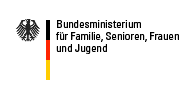Gender stereotypes
Gender stereotypes
Stereotypes are simplified ideas about people that determine how they are perceived. They are based on acquired prejudices which are no longer questioned in day-to-day dealings. Stereotypes help to make the environment simpler and reduce insecurity. As a result certain models of perception are created, which on the one hand make action easier and, on the other hand fix the characteristics of persons and groups and thus reduce contact to the stereotyped idea. These attributions are furthermore usually accompanied by value assessments.
Gender stereotypes attribute certain characteristics and ways of behavior to persons by virtue of their recognizable gender identity. These attributions are acquired very early on in the socialization process as the social environment reacts very differently to boys and to girls, as studies have shown. Therefore, their influence on our perceptions is mostly unconscious and so they are difficult to change in learning processes. Such ossified ideas can be corrected in systematic training by means for example of providing repeated experience that is clearly different.
Examples
In one study of behavior towards babies, is could be demonstrated that observers assessed the reactions of a baby very differently depending on its gender. If a boy cried, this was attributed to vexation, but if a girl cried, then it was because she was afraid. In both cases it was the same baby, given different first names.
Another study on the assessment of paintings came to the conclusion that a picture was accorded a much higher value if it was supposed to have been painted by a man, regardless of the gender of the observer. The same is true with scholarly articles. Articles supposedly by men were judged to be more intelligent and convincing.
Literature
Fried, A., Wenzel, R., Baitsch, C.: Wenn zwei das Gleiche tun. Diskriminierungsfreie Personalbeurteilung, Zürich 2000.
Krumpholz, Doris: Wahrnehmung von Frauen bei Einstellungen und Beurteilungen; in: Gleichstellung in der Praxis 2005/5, S. 23-28.
Spreemann, Sandra: Geschlechtsstereotype Wahrnehmung von Führung. Der Einfluss einer maskulinen oder femininen äußeren Erscheinung, Hamburg 2000.
Gender stereotypes attribute certain characteristics and ways of behavior to persons by virtue of their recognizable gender identity. These attributions are acquired very early on in the socialization process as the social environment reacts very differently to boys and to girls, as studies have shown. Therefore, their influence on our perceptions is mostly unconscious and so they are difficult to change in learning processes. Such ossified ideas can be corrected in systematic training by means for example of providing repeated experience that is clearly different.
Examples
In one study of behavior towards babies, is could be demonstrated that observers assessed the reactions of a baby very differently depending on its gender. If a boy cried, this was attributed to vexation, but if a girl cried, then it was because she was afraid. In both cases it was the same baby, given different first names.
Another study on the assessment of paintings came to the conclusion that a picture was accorded a much higher value if it was supposed to have been painted by a man, regardless of the gender of the observer. The same is true with scholarly articles. Articles supposedly by men were judged to be more intelligent and convincing.
Present situation
There has been a shift in the way gender stereotypes are dealt with in the last few years. Where they were openly stated previously, now they are being increasingly suppressed in public debate. It is no longer seen as acceptable in many areas to attribute capabilities purely on the basis of gender. In open opinion polls, women are even given a more positive assessment with regard to their leadership qualities (the “women-are-wonderful effect”). The classic gender stereotypes only become apparent when indirect study methods are used.Literature
Fried, A., Wenzel, R., Baitsch, C.: Wenn zwei das Gleiche tun. Diskriminierungsfreie Personalbeurteilung, Zürich 2000.Krumpholz, Doris: Wahrnehmung von Frauen bei Einstellungen und Beurteilungen; in: Gleichstellung in der Praxis 2005/5, S. 23-28.
Spreemann, Sandra: Geschlechtsstereotype Wahrnehmung von Führung. Der Einfluss einer maskulinen oder femininen äußeren Erscheinung, Hamburg 2000.
erstellt von Administrator
—
zuletzt verändert:
02.01.2010 20:07





